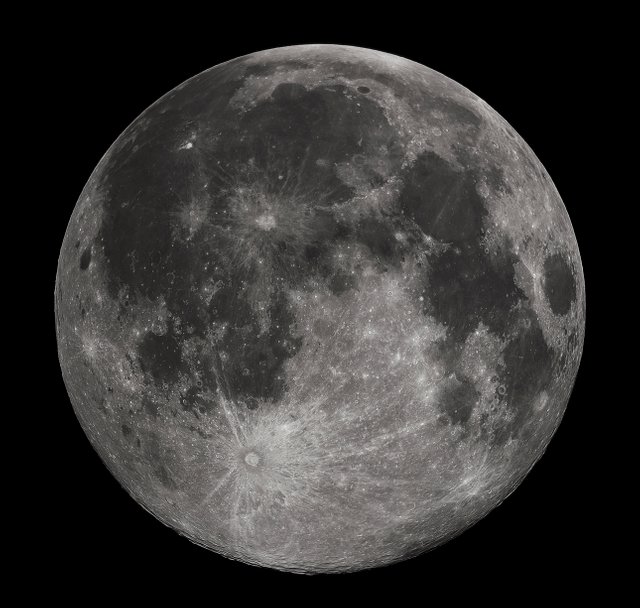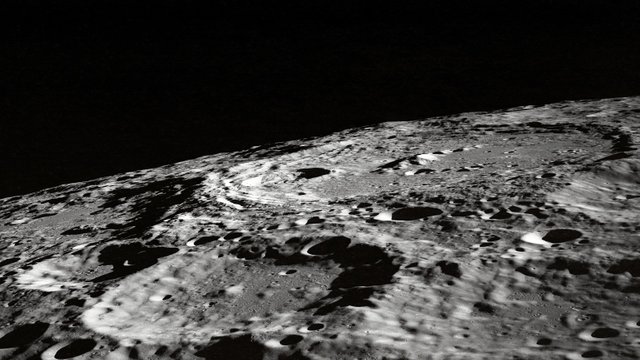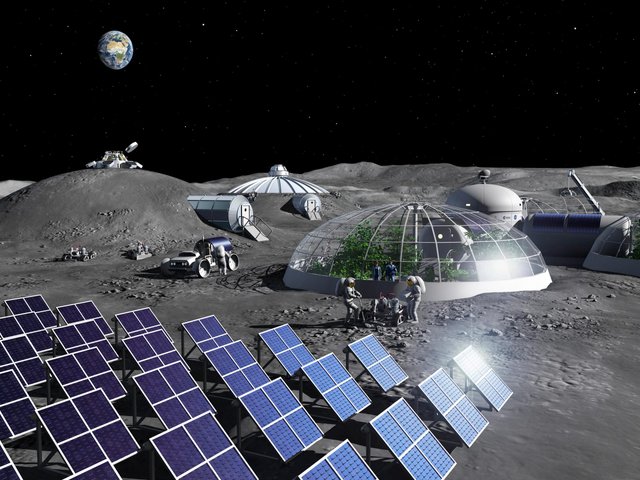Moon has enough oxygen to sustain 8 billion people for 100,000 years/La luna tiene suficiente oxígeno para sustentar a 8 mil millones de personas durante 100.000 años

Source
Unlike in the different NASA Apollo missions in which the objective was to set foot on the Moon and go home, the new Artemis project is focused on recreating the conditions to build a permanent base on our satellite that facilitates the permanence of human beings.
Al contrario que en las distintas misiones Apolo de la NASA en las que el objetivo era poner el pie en la Luna y volverse a casa el nuevo proyecto Artemisa está enfocado en recrear las condiciones para construir una base permanente en nuestro satélite que facilite la permanencia de seres humanos.
Although the Moon is relatively close and food and other materials could be sent periodically, this is no longer viable if we are on Mars, so the experts intend to use the In Situ Resource Utilization (ISRU) method which, as its name suggests, proposes the use of existing resources in the place to be colonized.
Aunque la Luna está relativamente cerca y se podrían enviar víveres y otros materiales periódicamente esto deja de ser viable si estamos en Marte por lo que los expertos pretenden utilizar el método Utilización de Recursos In Situ (ISRU en inglés) que, como su nombre indica, propone la utilización de los recursos existentes en el lugar a colonizar.

Source
The main resources we need are oxygen, water and methane and in terms of oxygen, according to experts, the Moon has enough oxygen to sustain 8,000 million people for 100,000 years but, unlike the Earth, which has oxygen in its atmosphere, the moon's oxygen is trapped in the lunar regolith, which is the dust that covers its surface.
Los recursos principales que necesitamos son oxígeno, agua y metano y en lo que se refiere al oxígeno según los expertos la Luna tiene oxígeno suficiente para mantener a 8.000 millones de personas durante 100.000 años pero, a diferencia de la Tierra que tiene el oxígeno en su atmósfera, el oxígeno de la Luna se encuentra atrapado en el regolito lunar que es el polvo que recubre su superficie.
But this is not something trivial, to obtain oxygen from the lunar regolith it is necessary to convert the solid metal oxide into a liquid, which requires a large industrial equipment that at the moment has already been built on land but mount it at 400,000 km on the moon and generate the energy needed to make it work is a real challenge.
Pero esto no es algo trivial, para obtener oxígeno del regolito lunar es necesario convertir el óxido de metal sólido en líquido lo que requiere un gran equipo industrial que de momento ya se ha conseguido construir en tierra pero montarlo a 400.000 km en la luna y generar la energía necesaria para hacerlo funcionar es un auténtico reto.

Source
Earlier this year, the Belgian startup Space Applications Services announced the construction of three experimental reactors to optimize the oxygen production process through electrolysis, this startup intends to send this technology to the Moon by 2025 in the In Situ Resource Utilization (ISRU) mission to be carried out by the European Space Agency.
A principios de este año, la startup belga Space Applications Services anunciaba la construcción de tres reactores experimentales para optimizar el proceso de producción de oxígeno mediante la electrólisis, esta startup pretende enviar esta tecnología a la Luna para 2025 en la misión de utilización de recursos in situ (ISRU) que será llevada a cabo por la Agencia Espacial Europea.
According to experts, each cubic meter of lunar regolith contains about 630 kilograms of oxygen and humans need to breathe about 800 grams of oxygen a day to survive, so one cubic meter of regolith would keep a person alive for about two years or so . If we assume that the depth of the regolith is about 10 m and that it can all be extracted, there would be enough oxygen to sustain the eight billion people on Earth for about 100,000 years.
Según los expertos cada metro cúbico de regolito lunar contiene unos 630 kilogramos de oxígeno y los humanos necesitan respirar unos 800 gramos de oxígeno al día para sobrevivir por lo que un metro cúbico de regolito mantendría con vida a una persona durante unos dos años más o menos. Si suponemos que la profundidad del regolito es de unos 10 m y que se puede extraer todo habría suficiente oxígeno para sustentar a los ocho mil millones de personas en la Tierra durante unos 100.000 años.
More information/Más información
https://theconversation.com/the-moons-top-layer-alone-has-enough-oxygen-to-sustain-8-billion-people-for-100-000-years-170013
Hola @mauromar, eso parece un chiste, hay oxigeno pero no se puede respirar.

Con tal de que esta gente no se le ocurra comenzar a cobrarnos por respirar viendo lo caro que resulta hacer oxígeno.
Saludos @mauromar, que irónica es la vida, pedimos a gritos lo que ya tenemos y peor aun no lo cuidamos.
I hope that this is just a hypothesis and it just stays there and does not execute it, since otherwise they would destroy the moon and they would not be doing anything. Personally, I think that the healthiest thing is not to destroy our environment, but rather, to live in harmony and balance.
Interesing theme. It will dawn and we will see how long the "piquito bread" lasts here on earth because it is almost uninhabitable. Will we live on the moon? Well, "many live on the moon", that is, "they do not step on the ground", why? Because we did not proceed in time so that the conditions on this planet were not deplorable. Now, will we go to the moon with the same mentality?
To a certain extent it is sad.
Yes, I fear so, we will also destroy the Moon in a few centuries.
Fortunately I won't be here to see it. ;-)
That's really awesome, thanks for sharing this information.
Very Weldon sir thanks for sharing very big information about moon 🌙🌙 life